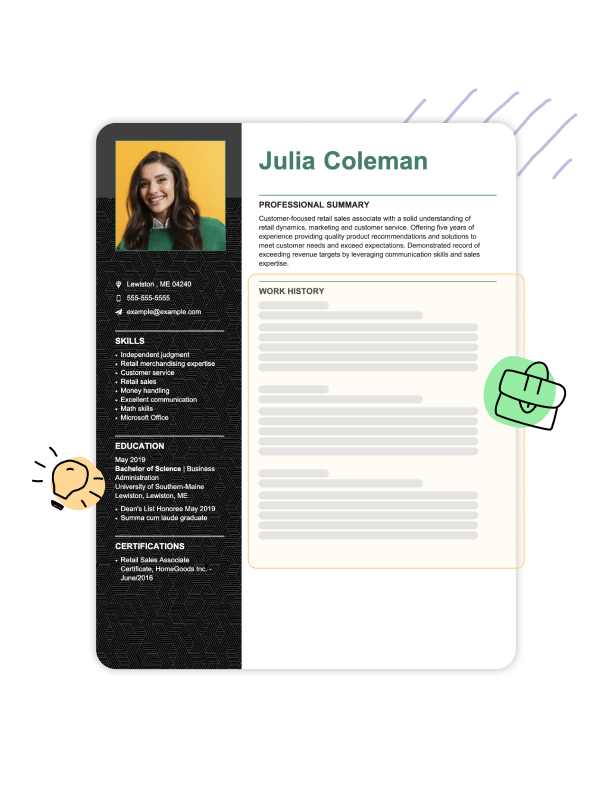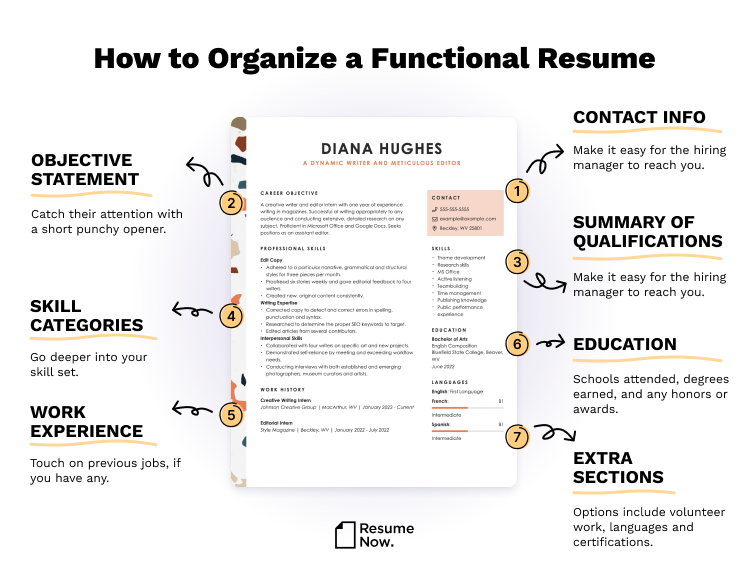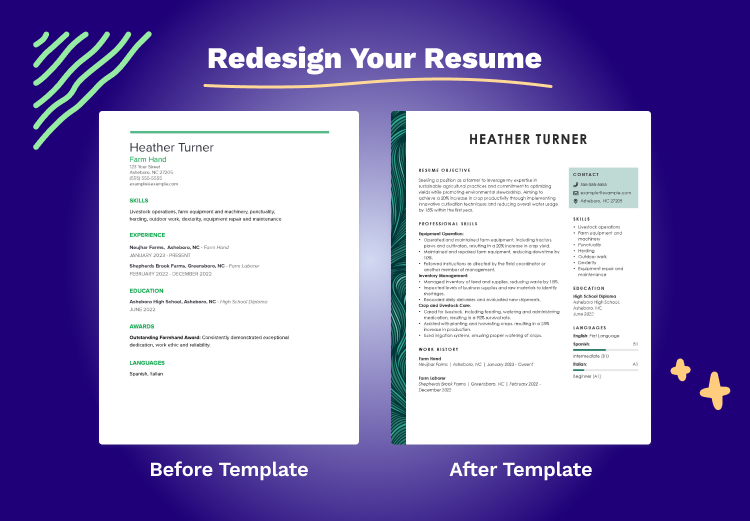Table of contents
- 1. Choose the Best Format for a Beginner
- 2. Select an Appropriate Template
- 3. Add Contact Info To the Header
- 4. Craft a Great Resume Objective
- 5. Add Sections To Replace Work Experience
- 6. Highlight Your Top Transferable Skills
- 7. List Your Education and Credentials
- 8. Consider Optional Sections
- 9. Proofread Your Resume and Download It as a PDF
- 5 No Work Experience Resume Examples
- Add a Cover Letter
- Key Takeaways
Building a resume with no experience doesn’t need to be difficult. Our guide will help you create an impressive resume that focuses on your strengths. Whether it’s your very first resume or your first resume in a new field, our guide will help you apply with confidence.
This guide will show you how to:
- Choose the best format.
- Select a resume template.
- Add contact info to the header.
- Write a compelling resume objective.
- Describe your relevant experience.
- Highlight your top transferable skills.
- List your education and credentials.
- Add optional sections.
- Proofread your resume and download it as a PDF.
- Use resume examples with no experience.
- Add a cover letter.
Ready to get started on your resume? Try our AI Resume Builder to complete a ready-to-send resume in minutes. Pick your favorite stylish templates and use AI-powered content suggestions based on your desired job title to fill it out. You can customize your content as much as you’d like or use it as is.
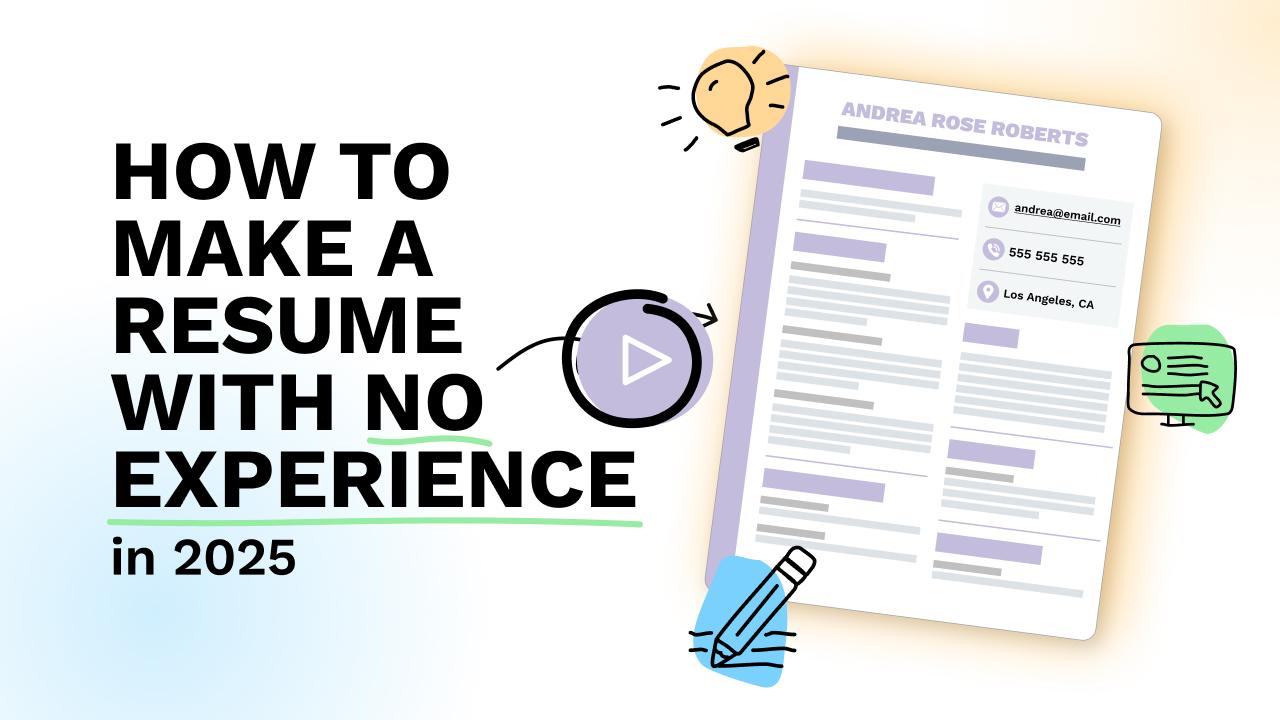
1. Choose the Best Format for a Beginner
While there are a handful of sections that must be included on every resume—professional summary, work history, skills, and education—how you organize the sections is very important, especially when you have no experience.
The order of your sections is based on your choice of resume format.
The three most common formats are:
- Chronological: This is the most common resume format. It focuses on work history, recounting your jobs in reverse-chronological order.
- Functional: The functional format is great for beginners because it emphasizes relevant skills and abilities above work history.
- Combination: This format is a favorite among career changers because it gives equal weight to skills and work experience sections.
For job seekers who have no experience, a functional resume is a safe bet.
Why? The functional resume details your skills and qualifications instead of your work history. This means that applicants with little or no experience can highlight their skills instead of struggling to fill their experience section. Here’s how a functional resume is organized:
For tips on handling margins, resume font, and more, our resume-formatting guide offers guidance. For even more insight, you can browse hundreds of resume examples for all different types of jobs and industries.
Examples can also help you with the next step in the process: picking a template.
2. Select an Appropriate Template
3. Add Contact Info To the Header
When you write a resume without experience, your mission is to get an employer’s attention and get called for an interview. That makes your contact info extremely important and something you should highlight at the top of your document in the header.
But please note—you want your header to be clutter-free, so only include the critical info.
Your resume header should mention:
- Your name
- Phone number
- Professional email address
Some candidates—particularly those in marketing or creative fields—may also want to feature their:
- Personal website or portfolio
- Social media channels
- Headshot
You should never include:
- Photos
- Salutations
- Zodiac sign
4. Craft a Great Resume Objective
At the top of your resume, you’ll need a professional profile. There are two types of profiles—the resume summary and the resume objective.
For job seekers without experience, a resume objective is clearly the best option.
Resume objectives are two- to three-sentence introductions that explain who you are and why you want to work for the employer. They are great for job seekers with no experience because they focus more on your goals and potential to contribute to the company than on your previous work experience.
Here’s an objective for a resume with no experience:
Recent graduate seeking a retail position to apply exceptional customer service, communication skills, and passion for the industry to contribute to the growth and success of the company. A quick learner and team player, eager to gain valuable retail experience and contribute to creating a positive shopping environment for customers.
Pro tip: To make a good impression, use action verbs and power words. If you aren’t sure which ones to use, examine the job listing. Write down the keywords the employer uses so you can use them in your objective statement.
5. Add Sections To Replace Work Experience
Work experience will always be an important part of your resume, even if your job history is thin. Employers look at your track record to decide whether you can deliver on your promises.
Now, when you have no experience, what should you put in this section? You should list the full spectrum of roles you’ve had. Don’t limit your experience to full-time jobs. Part-time work, gig-based roles, and other nontraditional jobs belong on your resume as long as they’re relevant to the role.
Before we check out the other experiences, here are a few tips for writing an excellent work history section:
- Use bullet points to make your work history easier to scan.
- Describe your experiences in terms of impact, rather than simply listing your duties.
- Don’t be afraid to include experiences you’ve picked up in school, like coursework and extracurricular activities, or outside the workplace, such as volunteer work.
OK, let’s dive deeper into the last bullet point—what experiences might qualify for your work history section when you have no formal experience?
Volunteering
Volunteering isn’t only a way to support your community—those experiences look great on your resume.
Common volunteer work includes tutoring, mentoring, fundraising, manual labor (like working at a soup kitchen), and event organizing. That said, there are literally thousands of NGOs, each one offering opportunities to build your resume.
Let’s see an example of what volunteer experience might look like:
Math Tutor
TCB After-School Support – Tampa, FL
Jan. 2022 – May 2025
- Provided one-on-one support to students in grades K-12, offering academic guidance and mentorship.
- Created individualized lesson plans based on each student’s learning style.
- Fostered a positive student learning environment and shared regular progress updates with parents.
Notice how the bullet points are just as compelling as what you’d find for a full-time position?
Now, let’s do the same rundown for what is often a job seeker’s entry point into the workplace: internships.
Internships
Internships are about more than just fetching coffee. They’re real opportunities to grow your skills and make connections that can jumpstart your career.
Internships are absolutely appropriate for a work experience section. Here’s how to package an internship role on your resume when you have no experience:
Marketing Intern
Green Planet – Los Angeles, CA
June 2024 – April 2025
- Helped post 50+ research and analysis articles about environmental issues on the company website.
- Assisted with creating materials for environmental education programs to use in outreach events.
- Oversaw data entry using Microsoft Excel and other software programs.
Just as you would with professional jobs, when it comes to internships, start by listing your most recent experience and working backward. That said, we’d suggest capping the number of internships at two or three. Unless you’re a recent graduate or are going to graduate soon, the employer may wonder why you haven’t found a more permanent solution.
Pro tip: Support your bullet points with quantifiable achievements. Hiring managers love seeing metrics that highlight the impact your work has had, even if it’s something as simple as the number of sales calls made in a given month.
Extracurricular activities
There’s more to college than parties and tests.
You can have more fun—and bolster your resume—by joining clubs, exploring your interests, and participating in the local community via extracurricular activities.
Here are some common extracurricular activities that look great on a resume with no experience:
- Student government
- Leadership programs
- Arts organizations (for example, drama club, dance teams)
- Cultural clubs (for example, African-American Student Union)
- Publications, like the student newspaper
- Athletics, including roles on the sidelines
- Personal or community projects
Employers want to know you’d be a valuable member of the team and a good fit for the company. Extracurricular activities do that by showing them your talents, ambition, and level of engagement.
Next, we’ll reveal how you can package these experiences in a way that will clearly transfer into the workplace.
6. Highlight Your Top Transferable Skills
Transferable skills are abilities you can take from job to job. They’re particularly useful when you don’t have any experience in your career path of choice.
You may be wondering—how do you know which transferable skills to highlight?
That’s easy. Follow this step-by-step process:
- Read the job description closely.
- Highlight the skills you find peppered throughout the listing.
- Write down any tasks you’ve done before.
- Add those bullet points to your resume skills section, using the exact language in the job description.
Make sure to look for a mix of soft skills (like teamwork, communication, problem-solving, and time management) as well as hard skills and technical skills (like knowing how to operate a computer program). There are transferable skills in every category.
Pro tip: Skills are more powerful when you share specific examples. If you cite instances of using a transferable skill, employers will have a better understanding of how you’ve used them in previous roles and how those skills might benefit their company.
7. List Your Education and Credentials
If you’re making a resume with no experience, chances are you’re in school or recently graduated, which means your education section will be more important than it is for a seasoned professional.
First, you should always list your degrees, including those you’re still working on, beginning with the most recent one and working backward. Here’s what that would look like:
EDUCATION
Bachelor of Science in Business Administration
ABC University, Albuquerque, NM
Expected Graduation: June 2026
Relevant coursework: operations management, corporate finance, entrepreneurship
Additionally, your education section offers another opportunity to emphasize relevant experience. For example, special projects and relevant coursework can showcase your skills and capabilities in a positive light.
Here’s an excellent example of how a student with no professional experience can make their resume much more attractive by including a special project:
EDUCATION
Master of Science in Computer Science
TK University, Bridgeville, IN
Expected Graduation: Dec. 2025
Coursework:
- Artificial intelligence
- Machine learning
- Computer programming
- Software engineering
Special project: Successfully implemented a machine learning project that predicted fraudulent insurance claims with 70% accuracy. Concepts used include clustering, decision trees, and neural networks.
Before we wrap up, there’s one more thing you might want to add to your resume—optional sections.
8. Consider Optional Sections
Optional sections are anything that would enhance your resume that isn’t strictly necessary.
Maybe you volunteered at your local animal shelter or learned a foreign language in your spare time. Perhaps you joined a community organization or completed a professional certification you’d been pursuing.
Any of the above would belong on your resume, but where exactly?
Start with a resume outline. Then, create section headers for any points that don’t fit into the main sections. But remember—they should be relevant to the job you’re targeting. For example, HR doesn’t need to know about your favorite computer games unless you’re applying for a role like game developer, game designer, or another relevant role.
Now it’s time to finish up your resume so it’s ready to download and submit.
9. Proofread Your Resume and Download It as a PDF
Don’t jeopardize your chances of getting hired by turning in a sloppy resume. Recruiters have been known to toss a resume over a single typo. So, proofread your resume thoroughly before you submit it!
And don’t proofread it once—read it two, three, or four times to ensure there are no mistakes. Then, send it to a trusted friend for a final review.
What should you look for? Misspellings, typos, inconsistencies, poor formatting, inappropriate fonts, and significant oversights. Any of these can cost you the job, even if you’re highly qualified.
Ultimately, when you’re ready to submit your resume, download it as a PDF. Make sure to examine the job listing to see if the employer requested a specific file type first. If they don’t specify one, then PDF is a safe bet because it’s become the industry standard (and it’s the best at retaining your formatting).
As always, you can write your resume in Microsoft Word or Google Docs, as long as you can download a PDF version.
For more specific, tailored advice, check out our other resume guides
5 No Work Experience Resume Examples
If you need more examples of resumes with no job experience, we’ve pulled together five common types.
After reviewing these closely, you’ll know how to create a resume with no experience more confidently.
By the way, if you’re looking for a CV rather than a resume, check out our guide on Curriculum Vitaes (CVs).
OK, onto the examples.
Resume for a nursing student with no job experience
Internship resume for a beginner
Resume for a teenager with no work experience
Resume for a student looking for a first job
Medical assistant resume with no experience
Add a Cover Letter
When you finish your resume, it can be tempting to submit your application, but hold on for just a second. You need to write a cover letter, too.
Cover letters help set you apart. They offer a valuable opportunity to describe to employers why you’re interested in the role and why you’d be a great fit. For candidates with no experience, this opportunity to convey your interest and passion is crucial.
Here’s how a strong cover letter would read if you have no experience:
Key Takeaways
Let’s touch on a few key points one last time.
Choose a resume format that’s well-suited to candidates with no experience
Functional resumes are best because they focus on skills rather than your professional history.
Consider a wider range of experiences
Full-time jobs aren’t the only valuable types of experience. Volunteering, internships, and extracurricular activities are all great additions to your resume.
Use optional sections to highlight your skills
There are many sections considered optional—foreign languages, volunteer work, professional certificates—that give the candidate a chance to list skills.
Emphasize what you accomplished in school
Mention special projects and coursework that show the employer your reliability, commitment, ambition, and engagement.
Was this information about How To Make A Resume With No Experience In 2025 [+ Examples] helpful? Let us know!
Don is a Certified Professional Resume Writer (CPRW) with more than 10 years’ experience creating digital content, including four years helping job seekers develop their careers. He holds an M.S. in Journalism from Northwestern University.
More resources
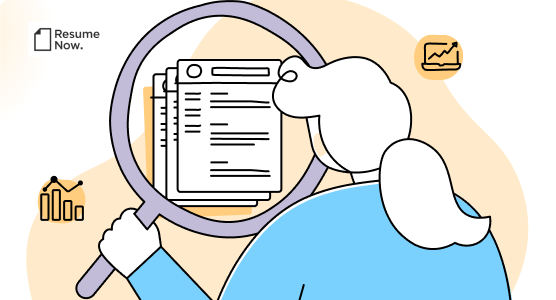
Only 1 in 10 Resumes Include Measurable Results, New Analysis of 18.4M U.S. Resumes Finds
Resume Now takes a closer look at measurable results on resume...

Top Entry‑Level Careers That Are Fast‑Growing, Higher‑Paying, and AI‑Resistant
Resume Now identifies 12 promising careers that offer strong s...

What Does It Mean if an Interviewer Says "Good Luck" or "We'll Be In Touch"?
Read on to learn the meaning behind these standard post-interv...
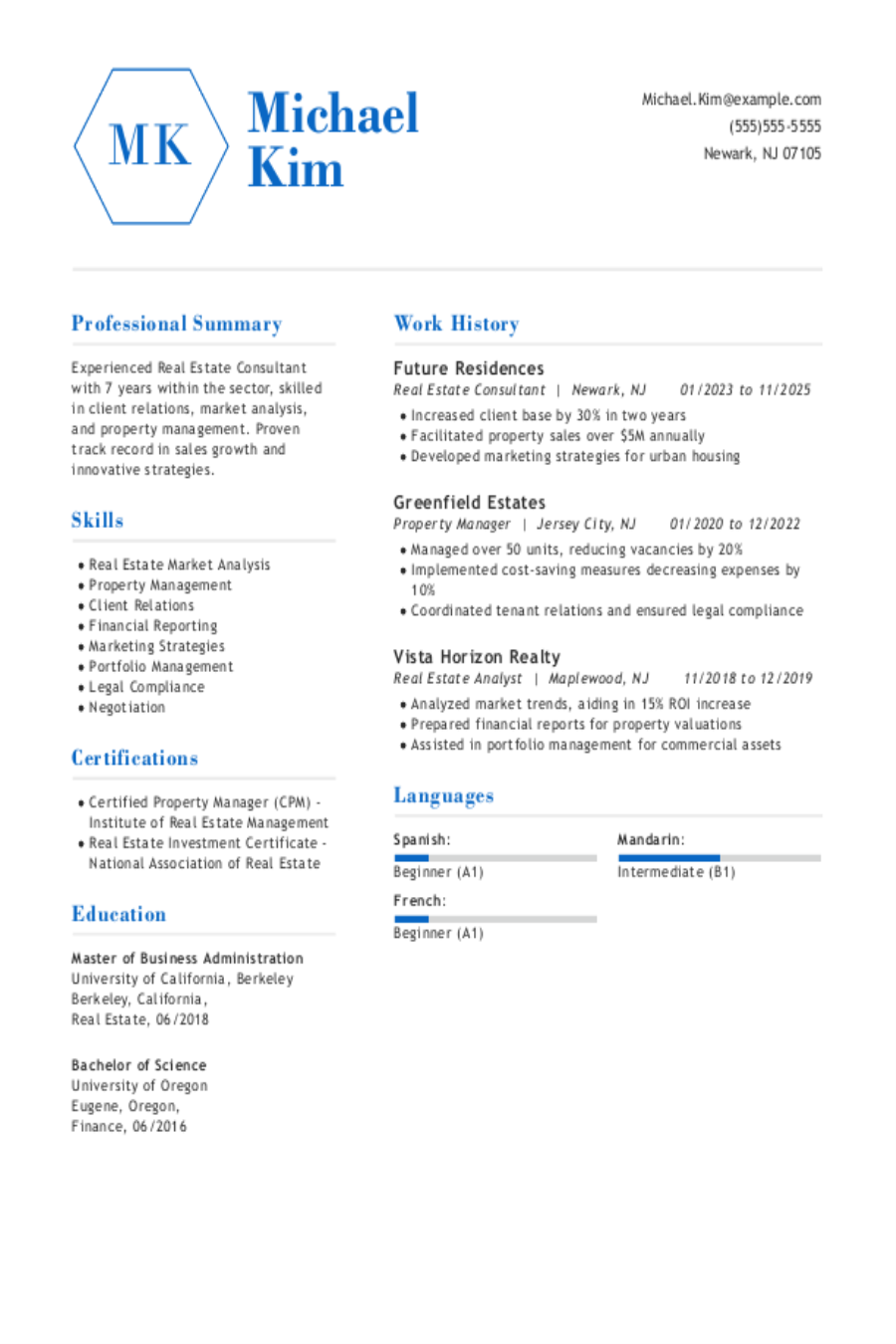
Real Estate Resume: Examples, Templates and Tips
Ready to start a career in real estate? Our resume examples an...
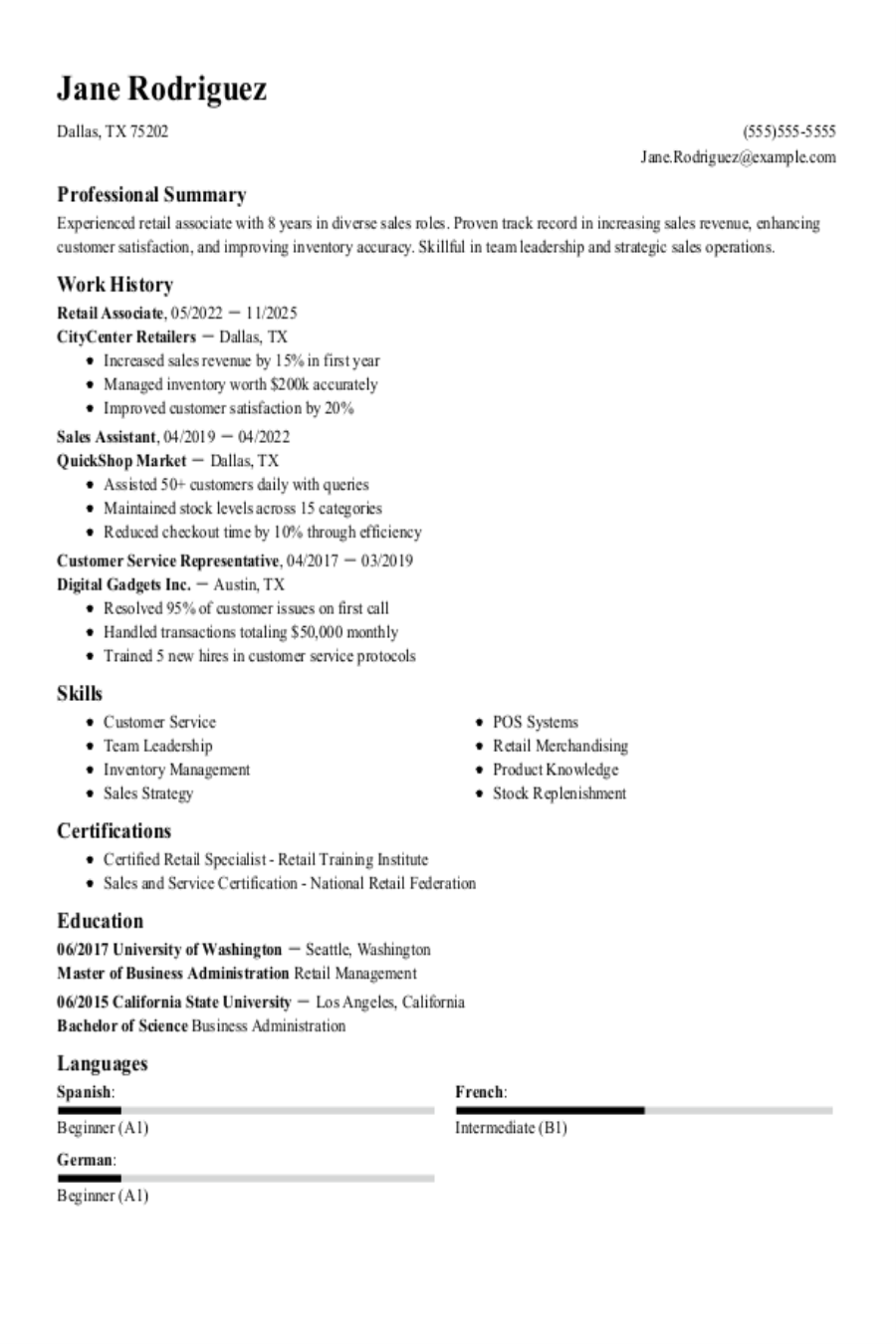
Retail Resume: Examples, Templates & Tips
Build & download your Retail resume in a few simple steps. Bro...
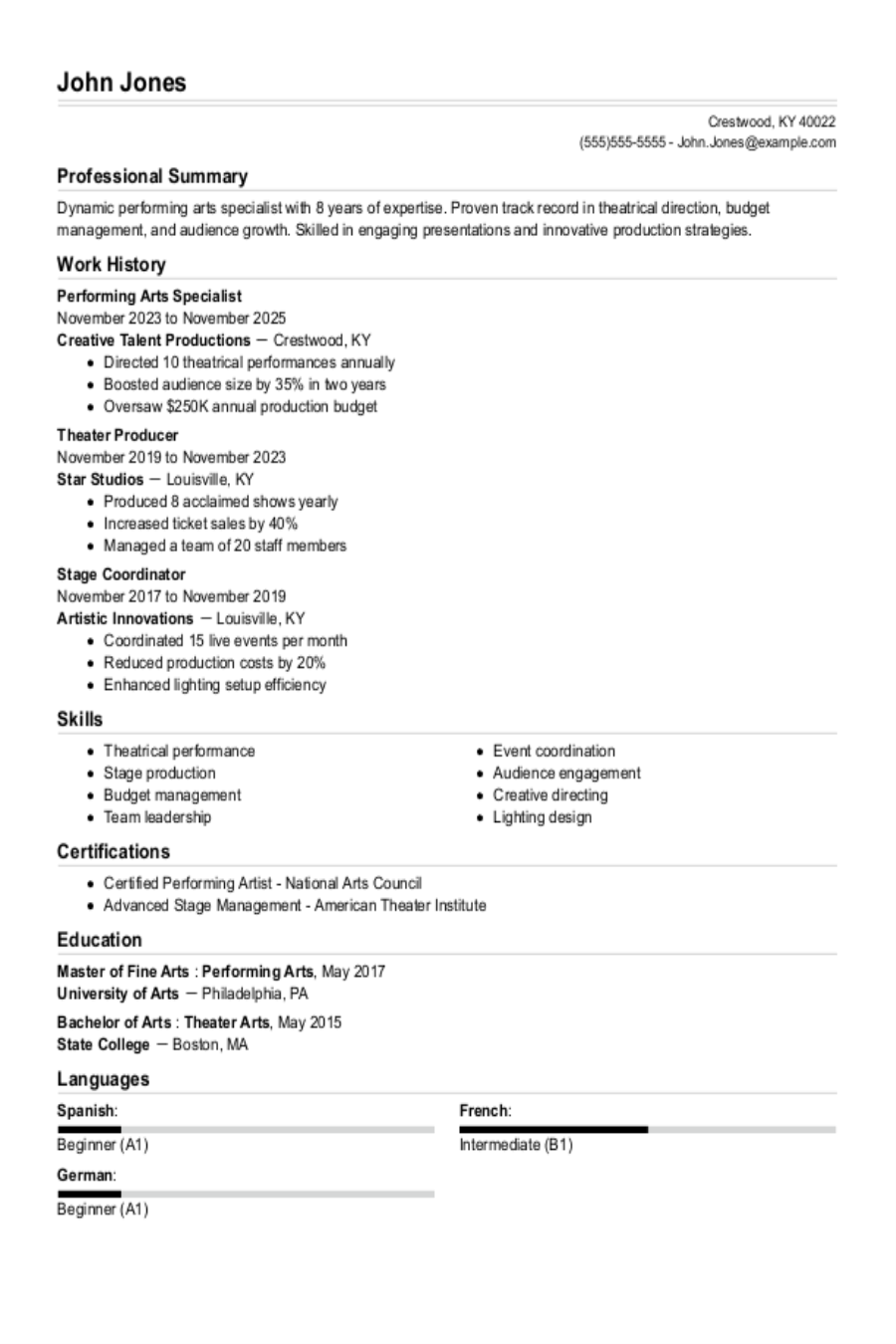
Performing Arts Resume: Examples, Templates and Tips
Ready to start a career in the performing arts? Our resume exa...

